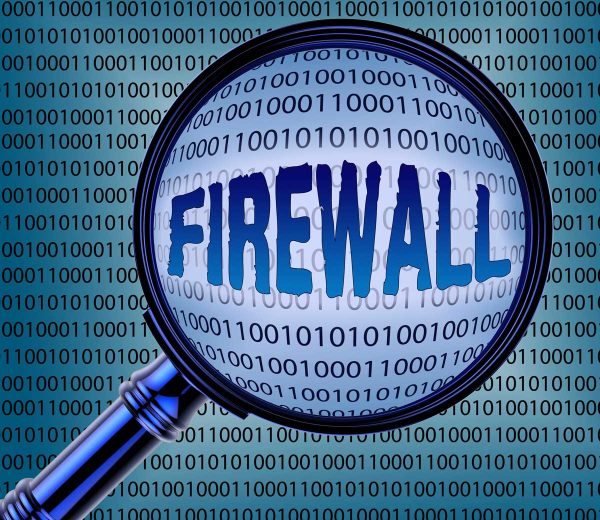What are managed cybersecurity services?

Cybersecurity often gets treated like a checkbox—something you set up once, then assume is quietly protecting your business in the background. You install antivirus software, maybe set up a firewall, and move on.
But the truth is, most small businesses aren’t nearly as protected as they think.
Threats are constantly evolving. Attackers don’t just look for massive corporations—they target the easy wins. And small businesses with outdated software, weak passwords, or off-the-shelf security tools are often at the top of the list.
That’s where managed cybersecurity comes in.
Instead of trying to handle everything yourself—or relying on tools that quietly fall out of date—managed services give you a team that’s actively protecting your systems. They don’t just install software and walk away. They’re monitoring, adjusting, updating, and responding in real time.
It’s the difference between locking your door once and hoping for the best… versus having someone standing guard, watching for risks, and handling them before they become disasters.
And while it might sound like something only big companies use, managed cybersecurity is often even more valuable for small businesses. With limited time and resources, you need protection that’s working when you’re not—even overnight or on weekends.
Understanding how managed cybersecurity works—and where most setups fall short—can help you make smarter decisions about keeping your data, team, and business secure.
Common cybersecurity mistakes small businesses make

Most small business owners assume they’re not a target. They figure hackers are going after big corporations or government agencies—not a ten-person team running a local operation. But that’s exactly what makes smaller businesses such attractive targets. Fewer defenses. Fewer processes. Fewer people watching.
Here are some of the most common cybersecurity missteps we see:
Relying on antivirus alone
Most threats today don’t act like viruses. They use phishing, social engineering, or unpatched software to get in—bypassing basic tools entirely.
Never updating software or systems
Critical patches often go ignored. That gives hackers an open window—sometimes for months—before anyone notices.
Weak or reused passwords
Passwords like “companyname123” or using the same login across multiple platforms make it far too easy to break in.
No visibility into devices or users
New laptops, phones, and cloud tools get added with no checks for security or access control.
Assuming no news is good news
Just because nothing looks broken doesn’t mean you’re not already compromised. Many threats operate silently until it’s too late.
Even businesses that think they’re being cautious often fall into one or more of these traps. Managed cybersecurity exists to catch those blind spots—not just by installing better tools, but by actively managing how those tools are used, updated, and monitored over time.
Why managed cybersecurity is more than just antivirus
Antivirus software still plays a role—but by itself, it’s nowhere near enough. The days when you could install a program, let it run in the background, and assume your data was safe are long gone.
Today’s threats are faster, smarter, and more personalized. They come in through phishing links disguised as invoices, fake login pages that mimic trusted services, and vulnerabilities in tools you’ve already installed. Some don’t even need you to click anything—they just wait for a lapse in updates or a weak setting to slip through.
Antivirus catches some of that, but not all. And most off-the-shelf security programs are built for general consumers, not businesses handling sensitive customer data, financial information, or proprietary systems. Without oversight, even the best antivirus tools get ignored, misconfigured, or simply outdated.
That’s where managed cybersecurity shows its value. Instead of relying on a single tool to catch every threat, it uses multiple layers of protection, such as:

- firewalls
- endpoint detection and response
- DNS filtering
- device and access policies
- user permissions and login controls
- systemwide monitoring and alerts
All of these are actively managed by professionals who stay ahead of evolving threats. It’s not about buying more software. It’s about managing what you already have, strengthening the gaps, and making sure someone’s actually watching.
Managed cybersecurity means you’re not depending on one program to save your business. You’re backed by a system—and a team—built to keep up with everything that’s constantly changing.
What a cybersecurity provider actually does
When people hear “cybersecurity,” they often picture software. Maybe antivirus, a firewall, or some automated system quietly running in the background. But the real value of managed cybersecurity isn’t in the tools—it’s in the people managing them.
A cybersecurity provider is actively involved in your day-to-day protection. They’re not just installing things and walking away. They’re monitoring, adjusting, improving, and responding in real time. That behind-the-scenes work is what keeps small issues from turning into costly disasters.
Here’s what that typically looks like:
Monitor your systems 24/7
They track performance, scan for vulnerabilities, and detect suspicious activity before it escalates.
Install and configure security tools
Firewalls, endpoint protection, email filtering, and DNS tools are set up properly—then adjusted as needed.
Manage software updates and patching
Instead of waiting months to fix critical flaws, they ensure updates happen quickly and securely.
Respond to threats and incidents
When something suspicious is detected, they investigate, isolate the issue, and take corrective action fast.
Advise on best practices
They help you build strong internal habits—like better password policies, smart access controls, and team training.
This kind of hands-on management isn’t just helpful—it’s essential. Cyber threats aren’t one-time events. They’re constant, evolving, and opportunistic. Having a partner whose job is to stay ahead of those risks means your business doesn’t have to fall behind.
Why cybersecurity updates and settings matter

Most security tools are only as good as their last update. That’s the part many businesses overlook. You can have all the right software in place—but if the settings are wrong or the updates haven’t run in weeks, your protection is already falling apart.
Cybercriminals know this. In fact, one of the most common attack methods is exploiting known vulnerabilities that were already patched—just not on your system. It’s not that the tools don’t work. It’s that they’re not being maintained.
Default settings are another weak point. Firewalls, email filters, and antivirus software often ship with generic configurations that don’t match your specific risks. Maybe file sharing is enabled when it shouldn’t be. Maybe remote access hasn’t been secured. Maybe alerts are turned off by default. These aren’t uncommon mistakes—they’re routine.
And without someone checking those settings regularly, nothing changes.
Managed cybersecurity services make those details their responsibility. Updates are handled promptly. Settings are reviewed and adjusted over time. When something changes in your environment—like adding new software or hiring a new employee—those changes are factored into your security plan.
It’s not just about reacting to threats. It’s about setting things up correctly to begin with, and continually tuning them as your business and the tech landscape evolve.
How to tell if your cybersecurity setup is vulnerable

Most small businesses don’t realize there’s a gap in their cybersecurity until it’s too late. And while some risks are obvious—like a stolen laptop or a suspicious email—others are much harder to spot without someone actively looking for them.
Here are a few common red flags that your current setup may not be doing enough:
- You haven’t reviewed your security tools in over a year
Software changes fast. So do threats. If no one’s looked at your systems lately, chances are something’s outdated or misconfigured. - You’re not sure if your data is backed up—or how often
If you can’t answer confidently, that’s a problem. Ransomware attacks don’t just lock you out—they destroy your only copy. - Only one person “knows the tech stuff”
When cybersecurity depends on a single overwhelmed employee, it’s easy for important tasks to slip through the cracks. - Employees use the same passwords everywhere
Credential stuffing attacks rely on this exact behavior. One breach somewhere else can open the door to your network. - You’ve never had a professional audit or assessment
Even basic oversight can reveal blind spots. If no one’s ever looked, you won’t know what you’re missing.
Cybersecurity isn’t about being perfect—it’s about being prepared. If any of these sound familiar, it’s worth asking whether your current setup is really protecting what matters.
Choosing the right cybersecurity partner
Cybersecurity doesn’t have to be overwhelming, but it does have to be intentional. The tools you use matter—but the people managing them matter more. Without regular updates, smart configurations, and ongoing oversight, even the best software can leave you exposed.
That’s why managed cybersecurity services exist. It’s not about adding more to your plate—it’s about taking it off. You get a team that handles the details, watches for threats, and keeps your systems protected while you focus on running your business.
If you’re unsure whether your current cybersecurity setup is keeping up—or you already know it’s overdue for a closer look—we’re here to help.
Let’s talk about what managed cybersecurity could look like for your business. Whether you need stronger tools, better monitoring, or a partner you can count on, we’ll help you build a security strategy that actually fits.
